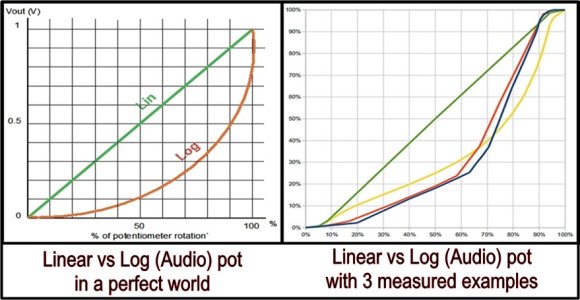Aceman
I am your doctor of love!
So two volume pots at 500k, should, IMO start at zero, and run to 500k with say an audio taper (or whatever)
Any two pots should sound the same, but besides the actual value, which might be 450 to 550 or so,
Can their be a difference is the curves as well, even if both linear, for example?
So I could have two pots that are theoretically the same, but one gets to a louder volume, and faster than the other?
Any two pots should sound the same, but besides the actual value, which might be 450 to 550 or so,
Can their be a difference is the curves as well, even if both linear, for example?
So I could have two pots that are theoretically the same, but one gets to a louder volume, and faster than the other?

